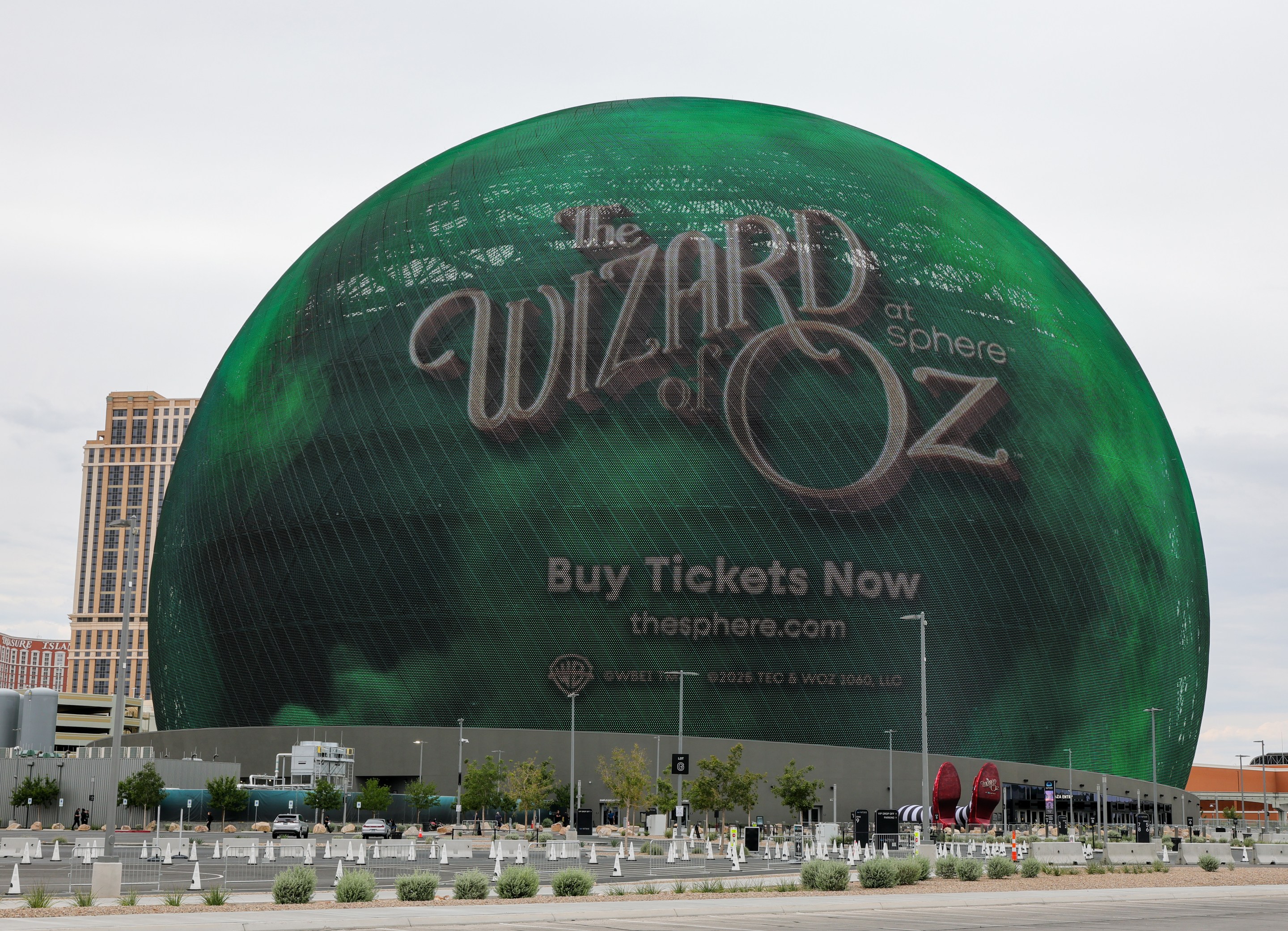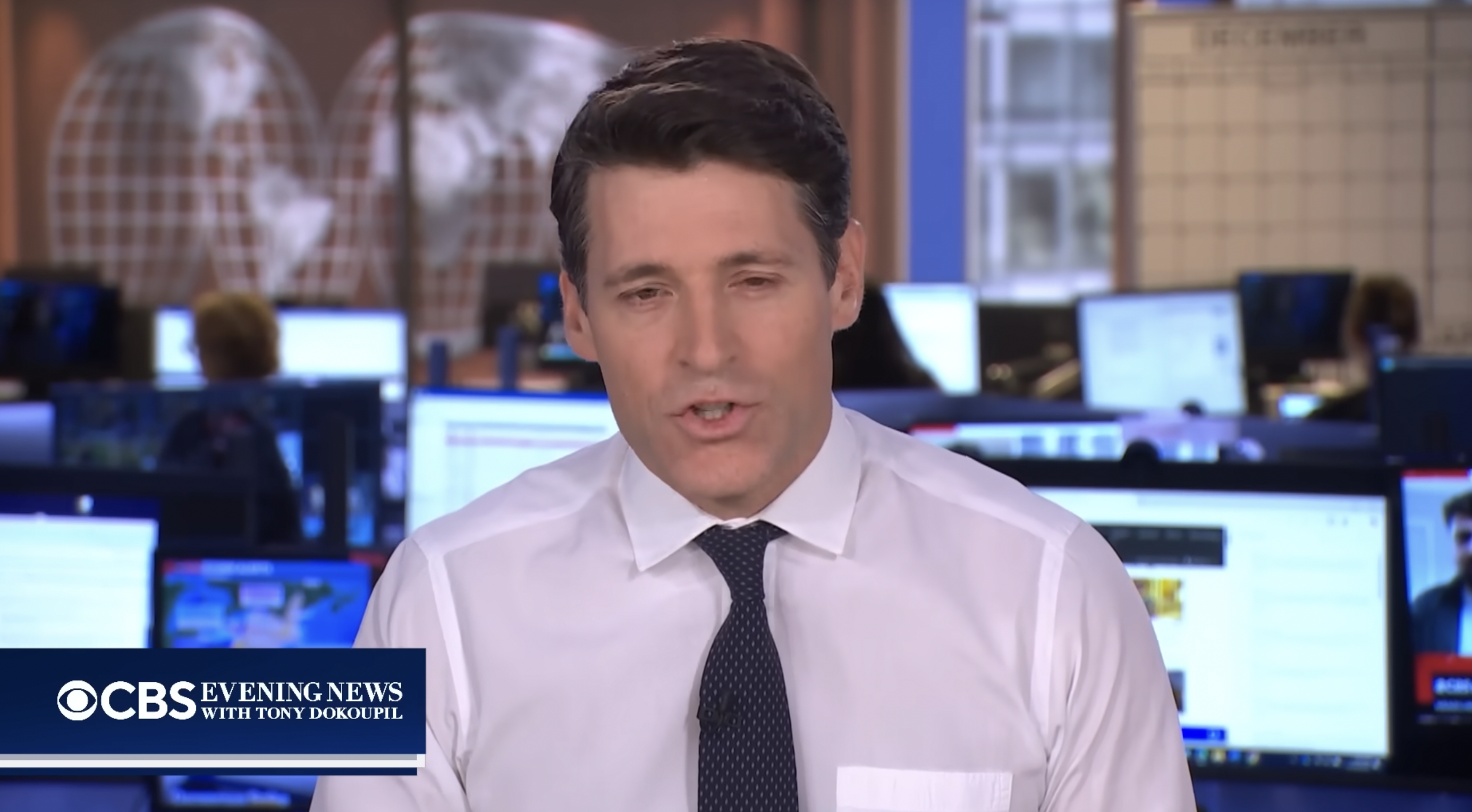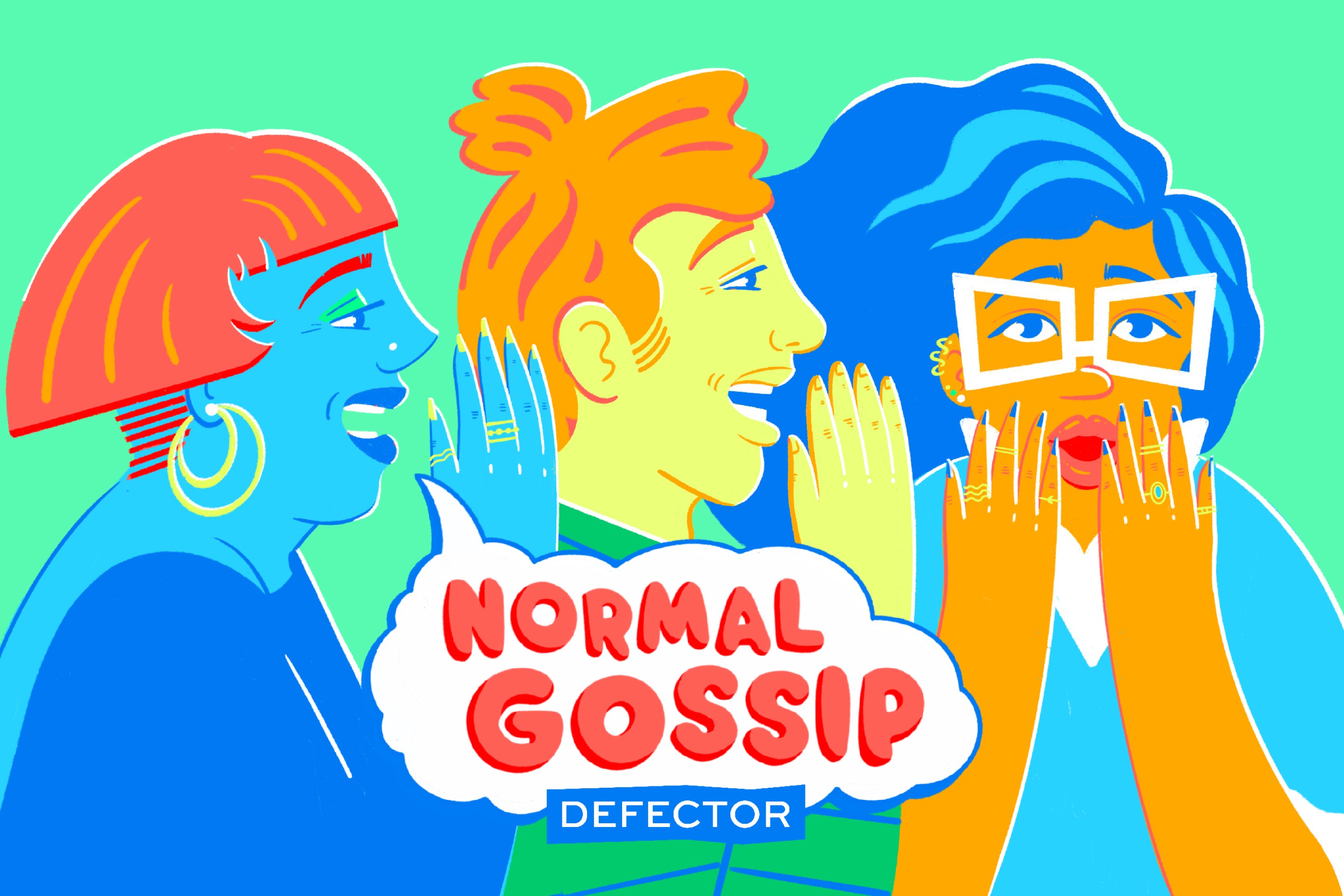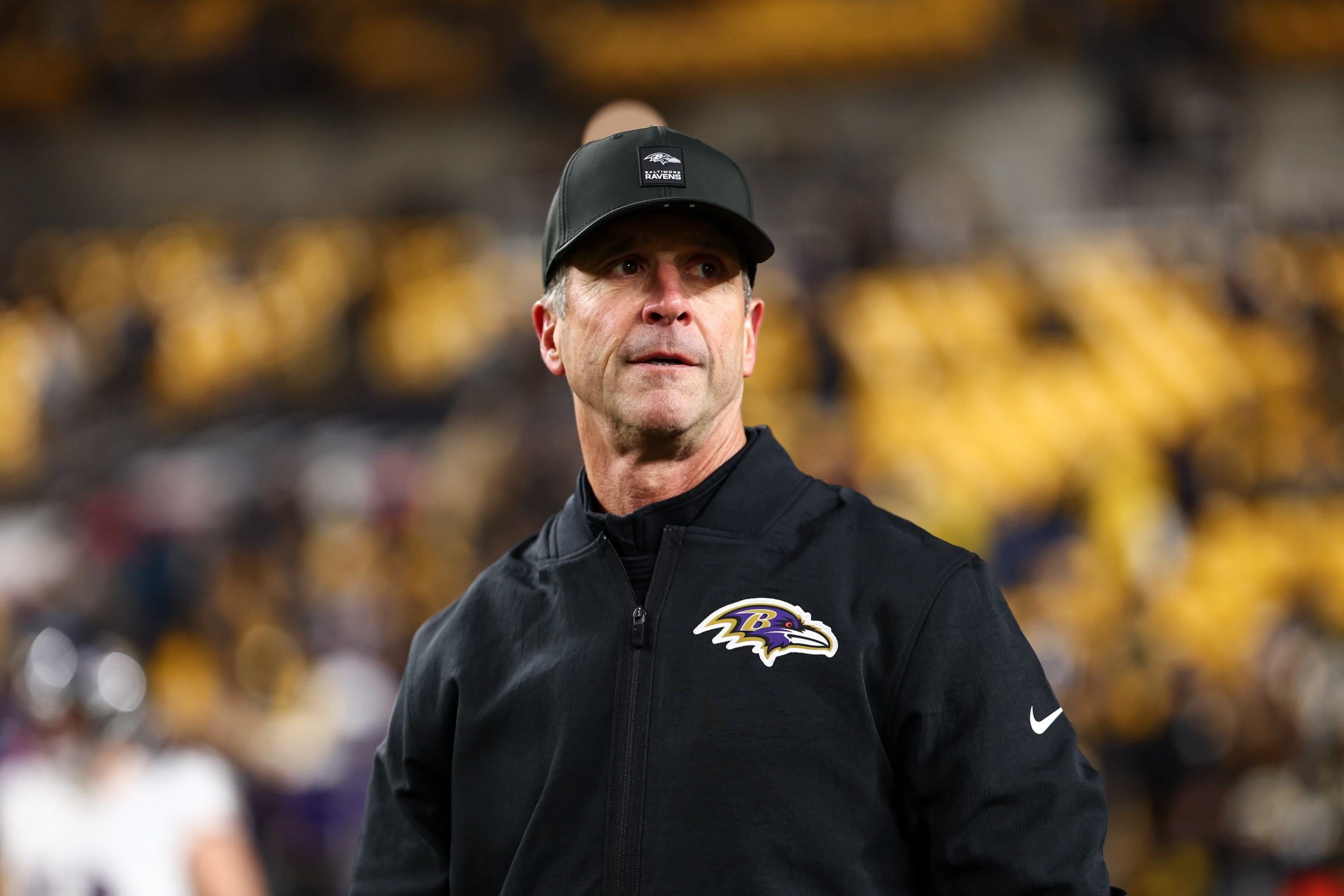Last week, I trudged through the Strip’s endless construction and a labyrinthine parking lot to have my first experience of Sphere. Sphere—just Sphere, no definite article—is owned by Sphere Entertainment, a holding company of the Dolan family (see: HBO, AMC, Radio City Music Hall, MSG Sports), which used to be called Madison Square Garden Entertainment, which itself was spun off from the Madison Square Garden Company. Sphere has been open since September 2023, but even as a local I’ve avoided it, because even by the standards of 21st-century Vegas, it looks and sounds stupid. Everyone has their limit. I pushed past mine because I had heard about the supposed revival of one of American cinema’s seminal achievements: The Wizard of Oz. A team of engineers and digital artists, gathered at the behest of Sphere’s owners, have spent two years working on a new version that can fit on Sphere’s 160,000-square foot LED display, the largest in the world.
This presents an immediate problem. Projecting a film from 1939 shot with cameras that produce a rectangular image would leave massive sections of black nothingness, precious dead space, all those millions and millions of diodes left unused. To remedy this, the Sphere team digitally extended sets, marshaled AI to scale up the image resolution as well as generate more background extras, cut half an hour from the original runtime, and threw in 4D bells and whistles to turn The Wizard of Oz into, in effect, a shitty, high-tech rollercoaster.
The Wizard of Oz at Sphere starts at $139 for standard admission, which nets you a nosebleed seat at the apex of one of the steepest seating galleries I’ve ever seen. As the executive VP of MSG Ventures Glenn Derry bragged in a Hollywood Reporter article about the project, there floats “13 million cubic feet of air in the Sphere” and you are paying low-to-high triple digits to breathe it.
The atrium inside Sphere, with its curved, undulating shape, reminded me of the main area of the now-defunct Star Wars: Galactic Starcruiser. It’s a neon-lit receiving bay of commerce, here decked out with Oz merch, featuring standard overpriced fare: $175 jackets, $50 T-shirts, $11 rainbow-colored popcorn. Sphere proudly boasts “22nd century engineering and technology” in its construction. Ascending floors on towering escalators, 3D projections scattered around the auditorium played images of sunburst clouds and iconic scenes from The Wizard of Oz, most using screens too thin and transparent to readily make out. It is the concept of maximalism made tangible and taken far too literally, a big room that induces an immediate existential stupor. The people behind Sphere want visitors to be dazzled by what they see. More specifically, they want audiences to be awed by the technology contributing to the spectacle. Pay no attention to the man behind the curtain.
Sphere is a not-very-good 1998 science fiction movie that played on TV throughout much of my childhood. In the film, a group of scientists led by Dustin Hoffman, Sharon Stone, and Samuel L. Jackson is called to investigate a mysterious spaceship at the bottom of the ocean that contains a floating, perfectly shaped liquid sphere. They soon discover the object makes the fears and wishes of those who enter it real. The convergence of numerous anxieties and desires causes a clash between reality and illusion, with the scientists struggling to parse which manifestations they encounter belong to whom.
Maybe if Sphere Las Vegas had a “the” in its name, I’d have forgotten about Sphere, the film. Instead, all I could think of in the minutes before The Wizard of Oz was the constant invocation of CEO James Dolan in every piece of promotional material for the venue, from Wall Street Journal video explainers to articles from the American Society of Cinematographers: how Dolan’s vision, his dream, his demand for groundbreaking innovation resulted in the singularly immersive experience of Sphere. If you visit Sphere, you are stepping into his dream. Perhaps this explains why his likeness and that of fellow ghoul Warner Bros. Discovery CEO David Zaslav have been pasted onto a pair of unnamed extras in the new Wizard of Oz experience. “It’s only for like two seconds,” Dolan told reporters at the premiere. But in those two seconds, he is both inserting himself into cinematic history and hoping to associate himself with grand technological achievement.
The Wizard of Oz is synonymous with Technicolor, one of the most stunning examples of the process in American filmmaking. It wasn't the first film to utilize it, though that fact doesn’t diminish Oz’s impact as a revolutionary advancement in color filmmaking, nor its subsequent influence on the Hollywood musical. Ironically, it is apt that Dolan and his collaborators have chosen The Wizard of Oz for an entirely different reason: the often unseen human toll AI inflicts echoes the production of Oz itself. The film is a fantasy of the Golden Age of Hollywood, a fairytale about childhood innocence and loneliness borne through a process of brute force, abuse, and negligence. Margaret Hamilton, who played the Wicked Witch of the West, suffered third-degree burns. Buddy Ebsen, the original performer cast as Tin Man, was hospitalized due to the toxicity of his makeup. Actors and animals were doused in asbestos. Judy Garland, whose legacy intertwines peerless talent and courage with tragedy, who was forced on the set of Oz to consume a regimen of barbiturates to manage her weight, who was verbally taunted by cast members and groped by MGM cofounder Louis B. Mayer, couched her recollections of the production in later years with a measure of wit and cleverly concealed outrage. Acknowledging this parallel context, critic Brendan Boyle writes, “Of all the special effects the movie employs, there is nothing more immediately upsetting than the image of Judy Garland crying.”
The Wizard of Oz, then, presents a dizzying whirlwind of associations, at once a cinematic triumph and a cautionary tale. Its history is plainly visible while watching the film, etched on celluloid and, in the case of Ray Bolger, who played Scarecrow, in lines on his face from his makeup that never went away. To see Oz remastered and rescreened in all its terrible glory would be its own privilege. But the purveyors of "experiences" like Sphere can only arrive at schemes without any deeper engagement with the material being messed with. While news outlets play nice with tech companies about the possibilities of AI, its deleterious effects on the environment and on human minds continues apace. To the evangelists and developers, these are necessary concessions, kinks to be worked out. The lackluster truth is that AI functions much like The Wizard of Oz at Sphere writ large: a mostly ugly gimmick.
The logistical quandary of scaling up the image of The Wizard of Oz to fill Sphere’s screen, coupled with Dolan’s dissatisfaction with the film’s incredible practical effects, results in the infamously plastic and uncanny quality with which we are already too familiar. Every frame of Oz has been altered and redone. CG set extensions, rendered at early Unreal Engine levels of fidelity, replace physical sets—the suspended head of the Wizard of Oz in his chambers near the end of the film has been entirely recreated as a CG character. Like the image cleaning process employed for Peter Jackson’s Beatles documentary Get Back, but on a more distracting and intrusive scale, faces and bodies have been mangled by AI, lending them the ephemeral, eerie appearance of a deepfake, each feature outlined by the ghost of the original image. Expressions blend into and out of one another, limbs unseen by the algorithm fade or glitch out of view, teeth and tongues leer from mouths, and background sometimes disappears entirely. On set, Judy Garland was made to wear dentures to hide her uneven teeth and put hoops in her nostrils to alter the shape of her nose. Such alterations are only expanded upon here, in scenes that, because of the digital reproduction of entire settings, means that the actors float inside sharp, computer-generated backgrounds. Crowd scenes utilize AI-generated extras, the same faces popping up, with preset motions like waving or cheering replaying like GIFs. In one scene, after Dorothy, Scarecrow, Tin Man, and Cowardly Lion enter the Emerald City, a woman in the corner of the frame stares off in the wrong direction, opening and closing her mouth, speaking to no one.
One of the strangest casualties of this extensive hatchet job is the destruction of the cinematographic language of The Wizard of Oz. Sphere is a ball where images must wrap around the screen to fully envelop the audience. Though the AI might try to render actors’ faces in higher resolution, there’s still the problem of the camera producing a rectangular image, moving in a limited range that, projected on Sphere’s screens, would result in a distorted, incomplete projection. Multiple visual effects companies retargeted each scene to match the requirements of Sphere’s curved screen, effectively replacing the original physical camera moves with digital ones. The result looks like shifting the camera around a character in a video game, a perfectly symmetrical and rigid maneuver. It also means that, in most sequences involving a wide or medium shot, actors are cut in half to make room for digital assets—a tree branch, the towers of the Emerald City, or the Wicked Witch’s castle—that fill the screen and extend up to Sphere’s ceiling. The actors, copied and pasted into an unreal environment, stand and talk in the bottom fourth of the frame, popping out garishly from their computer-generated settings.
Insult to injury: The 30 minutes cut from an already not-long film include the meat of most musical numbers, much of the opening sequence in Kansas, and the pauses during most scenes of dialogue. Jennifer Lame, Oscar-winning editor of films like Hereditary, Tenet, and Oppenheimer, but more revealingly, AI-enthusiast Darren Aronofsky’s Sphere-exclusive short film Postcard from Earth, gamely performed this lobotomy. The extended musical sequence in Munchkinland is transformed into a rushed medley of songs. Cowardly Lion doesn’t get to say “Put ‘em up!” or sing “If I Were King of the Forest.” The gatekeeper of the Emerald City doesn’t scold Dorothy and her new friends for not reading the sign. As edits both large and small pile up, the narrative of Oz begins to fray. It would be inaccurate to call The Wizard of Oz at Sphere a re-screening. It’s a theme park attraction targeted at the Disney adult set, with far less brand recognition or infrastructure to complete the fantasy. Inflatable flying monkeys piloted by drones flew through the crowd. Foam apples dropped from the ceiling. Leaves tumbled onto our heads. When our seats vibrated, it was like God’s phone going off in his pocket.
At its merciful end, the final credits displayed on Sphere’s massive screen listed the names of the VFX companies involved, along with the executives at MSG Network, the scientists at Google DeepMind, and the musicians who re-recorded the film’s score. Do I need to say that most people in the audience were filming the movie with their phones? Or acknowledge that The Wizard of Oz isn’t even the point of The Wizard of Oz at Sphere? Part of it is selling merch, yes, but this event is merely the one step on the road that leads to Abu Dhabi, where the next Sphere is set to be built.
When the film finished, a placard told the audience that the real conclusion was taking place in the atrium, where an actor dressed as the Wizard’s Guard stood on a reproduction of the Wizard’s chambers. The actor addressed a gathering crowd, warning them that the Wizard would be arriving soon. An employee playing the Wizard gesticulated behind a curtain off to the side, his face being scanned so the digital Wizard’s head projected on a tall screen above us could move along with his expressions in real time. We were meant, once again, to stand in awe of the great power on display before us. For all the money spent remaking The Wizard of Oz, you have to wonder if anyone behind this project has ever actually watched it.






